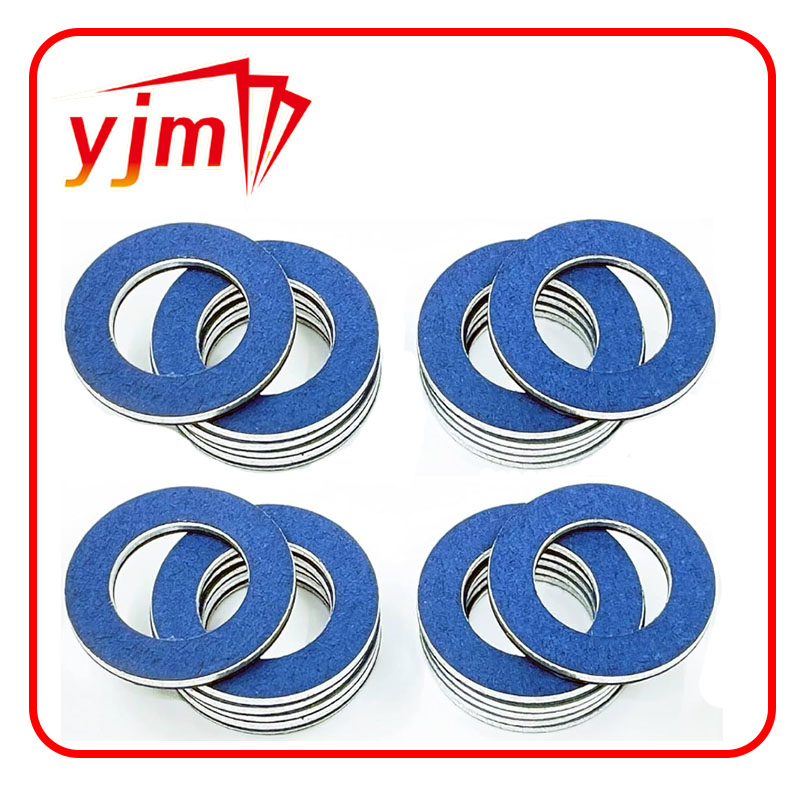Flat Rubber Seals for Enhanced Durability and Leak Prevention in Various Applications
The Importance of Flat Rubber Seals in Various Applications
Flat rubber seals are essential components in a myriad of industries, serving as critical barriers to prevent leaks, protect against contaminants, and ensure the smooth operation of machinery and equipment. Made from high-quality elastomers, these seals offer excellent flexibility, resilience, and durability, making them suitable for a wide range of applications.
Understanding Flat Rubber Seals
Flat rubber seals are flat, typically circular or rectangular, pieces made from rubber or synthetic materials designed to fit snugly between two surfaces. Their primary function is to create a seal that prevents the passage of fluids or gases. The effectiveness of these seals depends on several factors, including the material composition, thickness, and the precise dimensions tailored for specific applications.
Applications Across Industries
One of the most common applications of flat rubber seals is in the automotive industry. They are crucial in ensuring that components such as engines, transmissions, and water pumps operate without leaks. For instance, flat rubber seals are utilized in oil pans and valve covers to trap engine oil and prevent it from escaping, which is vital for maintaining optimal engine performance.
In the manufacturing sector, these seals play a vital role in machinery and equipment. They are often used in hydraulic systems, where they help to contain hydraulic fluids and maintain pressure within the system. A leak in these systems can not only lead to inefficient operation but also pose safety hazards, making reliable seals indispensable.
The aerospace industry also relies on flat rubber seals for various applications, including the sealing of fuel tanks and engines
. The harsh conditions of altitude and temperature put additional stress on sealing materials, necessitating the use of high-performance rubber compounds that can withstand wear and tear while providing reliable sealing under extreme conditions.flat rubber seal

Material Selection and Advantages
The choice of material for flat rubber seals is critical to their performance. Common materials include neoprene, silicone, EPDM (ethylene propylene diene monomer), and Nitrile rubber. Each has its specific advantages, such as temperature resistance, chemical compatibility, and weather resistance. For instance, silicone seals are often used in high-temperature applications, while EPDM is ideal for outdoor use due to its resistance to UV light and ozone.
Flat rubber seals also contribute to cost savings for businesses. By effectively preventing leaks and contamination, they minimize the risk of equipment failure and downtime. This not only helps in maintaining operational efficiency but also reduces maintenance costs and prolongs the lifespan of machinery.
Installation and Maintenance
Proper installation of flat rubber seals is essential for optimal performance. They must be installed in a clean and dry environment to avoid contamination. The surface where the seal sits should be smooth and free of debris to ensure a good fit. Regular inspection and maintenance of these seals can help detect wear and potential failure points before they cause significant problems.
Conclusion
In conclusion, flat rubber seals are a vital component in many industries, providing essential sealing solutions that enhance efficiency and safety. Given their diverse applications and the critical role they play in preventing leaks and protecting equipment, the importance of investing in high-quality flat rubber seals cannot be overstated. As technology advances and industries evolve, the demand for reliable sealing solutions will continue to grow, cementing the place of flat rubber seals in industrial applications.
-
Understanding Automotive Oil Seals: Essential Components for Engine and Shaft Protection
News Jul.30,2025
-
The Importance of Heavy Duty Seals in Industrial and Residential Applications
News Jul.30,2025
-
Exploring Industrial Oil Seals: From Felt Oil Seals to TTO and CFW Solutions
News Jul.30,2025
-
Essential Guide to Oil Seals: From Radial to Metal-Cased Seals for Industrial Reliability
News Jul.30,2025
-
Choosing the Right Oil Seals and Gaskets for Industrial and Automotive Applications
News Jul.30,2025
-
Cassette Seals: Durable Sealing Solutions for Harsh Environments
News Jul.30,2025
-
Understanding the Front Main Engine Seal: Purpose, Maintenance, and Installation
News Jul.29,2025
Products categories















